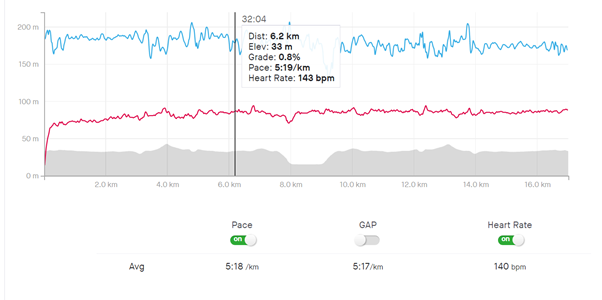Recent research has highlighted the benefits of performing high intensity interval training (HIIT). Short bursts of intense exercise (30 seconds – 4 minutes) interspersed with short recovery periods, has shown to have substantial health benefits. However HIIT is not perfect and has some substantial downsides. The high intensity nature of the exercise means it’s not applicable for people new to exercise or very deconditioned. Working at the intensities required for HIIT (>80% max HR) is also very fatiguing, meaning it’s hard to perform this type of exercise on a daily basis.
What is LIT ?
Since the popularity of HIIT, the benefits of low intensity steady state exercise seem to have been forgotten. Certain physiological adaptions are much better trained through low intensity training. Low intensity training can generally be characterised as an intensity level below, what’s known in the sports science world, as lactate threshold one (LT1). To simplify this its around 60-75% of your max cardiac capacity (VO2 max). If we were to try and simplify it further, we could say it’s an intensity where you could still speak fairly comfortably with only short breaks between sentences required.
The benefits of LIT
You might be surprised to know, elite endurance athletes do a lot of LIT. In fact, it’s not uncommon for 80% of their total training volume to be low intensity. This is for good reason, LIT has some favourable attributes which make it an ideal training method to increase endurance performance. The low intensity nature of LIT means a large amount of training can be accomplished with minimum fatigue. This allows frequent training (twice or three times per day for elite athletes) which has a positive effect on the degree of physiological adaption.
The main reported physiological adaptions strongly associated with LIT include capillary densification and mitochondrial volume expansion. Capillaries are the small vessels which supply blood to the working muscles. The more intricate and densely populated the muscle tissue is with capillaries, the better supply of oxygen and clearing of waste metabolites. Mitochondria are the powerhouses of our cells. They are the site of aerobic energy production, producing most of the energy needed for us to function. LIT training stimulates these factories of energy to increase in size, increasing their capacity to produce energy. Together with other adaptions, these changes help increase the work capacity of the human body, increasing athletic performance.
How to perform LIT
To perform LIT correctly, you need to make sure you are training at a sufficiently low intensity, and not pushing too hard. Pushing too hard will result in excessive fatigue and the duration of the exercise will have to be reduced. With LIT, the goal is to train at an intensity you feel you can sustain comfortable for a long continuous period. Your heart rate should remain pretty stable and not significantly increase during the workout. Below is an example of one of my low intensity running workouts. As you can see my heart rate (red line) is relatively low, and staying at a constant rate for the duration of the 17km. If you wanted to accurately find the correct pace, you would need to visit a sports science lab and undertake a lactate threshold test. From this you could pin point the exact pace to perform LIT, which would be a pace just under your lactate threshold.

HIT or LIT, which is best ?
You need to remember that no one exercise method is best. Different methods of training elicit different physiological adaptions. Low intensity training is great for developing endurance characteristics, burning a lot of calories and conditioning your body. However like all training protocols it has its limitations. LIT is not the greatest for developing speed, power or maximal cardiac capacity, HIIT protocols are much better. LIT is also very time consuming, you need to spend many hours training to gain the benefits, this is another reason why HIIT has become so popular. Which is best depends of your goals. If you have entered a marathon then the majority of your training should be LIT, mixed with a bit of HIT. On the other hand if you like doing more explosive sports or don’t have much free time, maybe HIT is more applicable. Overall if you just want to be holistically fit, try to incorporate both types of training, you will benefit from both.



